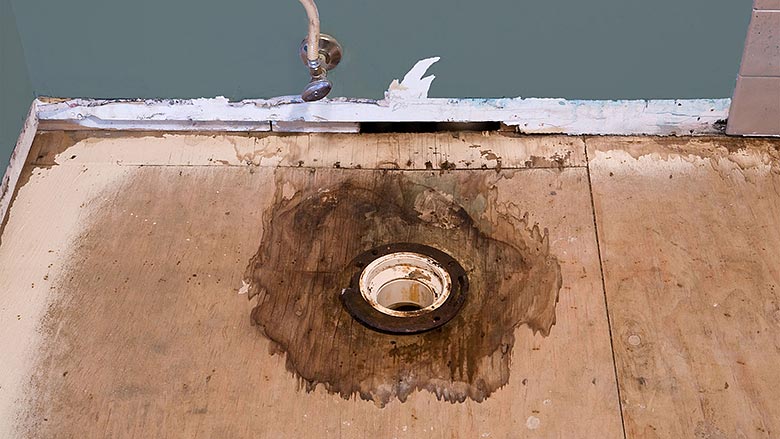Ways to Fix a Water-Damaged Wall in the Bathroom
Ways to Fix a Water-Damaged Wall in the Bathroom
Blog Article
What are your ideas concerning How to Repair and Prevent Bathroom Water Damage?

The restroom is extremely prone for moist buildup and possible water damage as a result of the frequent use water in it. This short article supplies easy examination techniques to aid detecting water damages threats.
The regular use water in the restroom makes it exceptionally susceptible for wet build-up as well as potential water damage. By evaluating it frequently, you can reduce water associated problems.
The adhering to set of assessments is very easy to carry out and also should be done when in every 3 months in order to keep your shower room healthy and to avoid possible water damages triggered by the bath tub, the shower, pipe joints as well as plumbing, sinks, closets, and the bathroom
Do not forget performing these examinations as well as be thorough while performing them. Bear in mind that these straightforward inspections can conserve you a lot of cash by supplying very early indicators for water damages
Bathtub and Shower
The shower and also tub require special focus and also maintenance. Check the ceramic tiles and replace if broken. See to it that there is no missing grout between the tiles. Inspect as well as change cracked caulking at joints where the walls satisfy the floor or the tub. Clogged drains and also pipelines issues will certainly stop the bathtub from drying out and also might suggest severe troubles below the bathtub. Speak with an expert instantly to avoid structural damages. Take notice of stainings or soft locations around the bathtub walls as they may indicate an interior leakage.
Plumbing
Signs for water damages are hard to find because many pipes are mounted inside the wall surfaces.
Pay special attention to floor covering as well as walls moisture and stains as they might show an unseen plumbing trouble. Inspect moisture degrees in adjacent areas also.
Sinks and Cabinets
Sinks and closets are revealed to moisture and also moisture everyday and are usually forgotten. Check on a regular basis under the sink and on the kitchen counter over it. Repair any type of drip in the trap as it might recommend drain troubles. Take a look around the sink, slow-moving draining pipelines may indicate an obstructed drain. Replace sink seals if they are cracked or loosened.
The Bathroom
The toilet is an at risk water joint. Inspect the water lines and search for leakages around the commode seat, in the pipe, as well as under the water tank. If you detect any kind of indications of moisture on the flooring around the bathroom, check for leakages in the toilet rim and container seals.
Know that hanging bathroom bowl antiperspirants enhances the chances for clogs.
Water Damage Signs In The Bathroom To Avoid Cleanup
Musty smell
This is one of the easiest signs to catch because musty smells are so odorous. The damp, earthy, moldy smell should be a big red flag. The smell will develop when moisture gets trapped in surfaces, and begins to facilitate mold growth. Leaking pipes under cabinets, inside walls, and behind shower fixtures will cause moisture to stay trapped and not dry, which will lead to mold growth and spread. As soon as you notice any musty smells in your bathroom, have it checked for hidden water damage and cleanup signs.
Visible mold
If the smell isn’t there to give it away, sometimes you will actually see mold growth. Finding mold in your bathroom is a serious problem, because mold is very harmful to your health. By the time mold growth is visible, it also means that water damage has already occurred and been present for some time. The only way the mold problem can be resolved is to find the source of the moisture and get it stopped. To safely and adequately remove mold, you need to have professionals handle the remediation. Do not waste any time in getting mold problems addressed, fixed, and sanitized so that you can protect you and your family from the many respiratory symptoms caused by mold exposure.
Damaged floors
Bathroom floors should be able to withstand some exposure to water while still remaining in good condition. However, when excess exposure or water leaks occur, they will begin to damage even the most water-resistant flooring. If you notice any cracking, bubbling, staining, or warping on your bathroom floors, there is probably a water leak somewhere causing the distortion. If you notice areas of the floor have become softer, or even have a spongy feeling, there is probably damage to the subfloor. Subflooring is typically made up of plywood. When plywood is exposed to water or moisture, it will absorb it. Once it has become saturated, the weight of the excess water will cause the wood to swell and soften. Check the floors in your bathroom frequently to catch any of these sings before they lead to damaged subflooring.
Changes on walls
When water leaks behind walls, it will cause changes in the drywall. Peeling plaster, blistering paint, and soggy wallpaper are all good indicators that excess water is building up behind the wall. Water leaking behind drywall will cause it to swell and be soft to the tough. If you start to notice gaps along the trim of your walls, or where tile meets the wall, it could also be a strong indicator that there is a leak behind the wall. Any changes, distortion, or damage on the walls should be evaluated as soon as you notice it to prevent further water damage and cleanup.

We were made aware of that write-up about How to Prevent Bathroom Water Damage through a friend on a different blog. Enjoyed our piece of writing? Please share it. Let another person locate it. Thanks for your time invested reading it.
Schedule Services Report this page